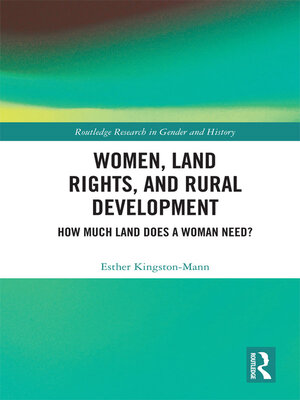Women, Land Rights and Rural Development
ebook ∣ How Much Land Does a Woman Need? · Routledge Research in Gender and History
By Esther Kingston-Mann

Sign up to save your library
With an OverDrive account, you can save your favorite libraries for at-a-glance information about availability. Find out more about OverDrive accounts.
Find this title in Libby, the library reading app by OverDrive.



Search for a digital library with this title
Title found at these libraries:
| Loading... |
The failure to include gender in the economic history of rural development has severely limited our understanding of privatizing, collectivist and colonial economic policies that disrupted and transformed the lives of rural women and men in the modern world. This book is unique in its focus on female economic agency, and in its exploration of the latter virtue in comparative historical perspective. It presents the apparently disparate cases of 17th-century England, 20th-century Russia and the Soviet Union, and 20th-century Kenya, as their top-down modernization projects were implemented in similar fashion —particularly in the case of women. The female half of the population was largely absent from contemporary economic databases, but nevertheless stereotyped as obstacles to rational economic decision-making. Introducing rural women and their innovations into male-centered narratives of economic history lays the foundation for a more demographically balanced and realistic understanding of rural behavior and rural development. In this study, women's labor and land claims are the lens through which both female agency and the delegitimizing of women's land claims become more visible. Both policy-makers and their leading critics deployed virtually identical language to describe backward, unruly and invariably "unsightly" peasant women.






